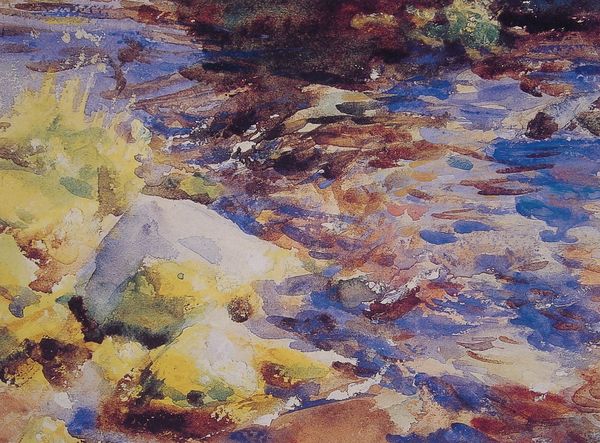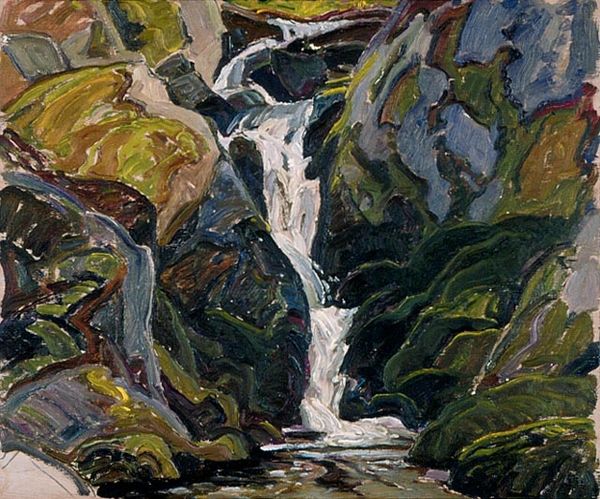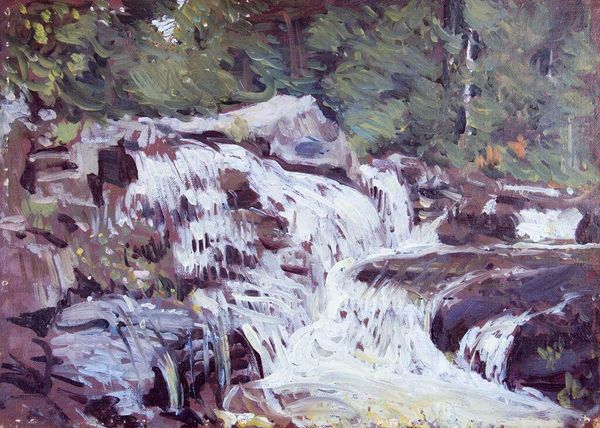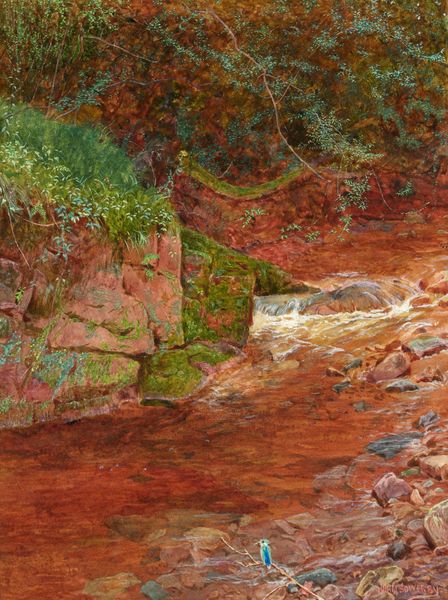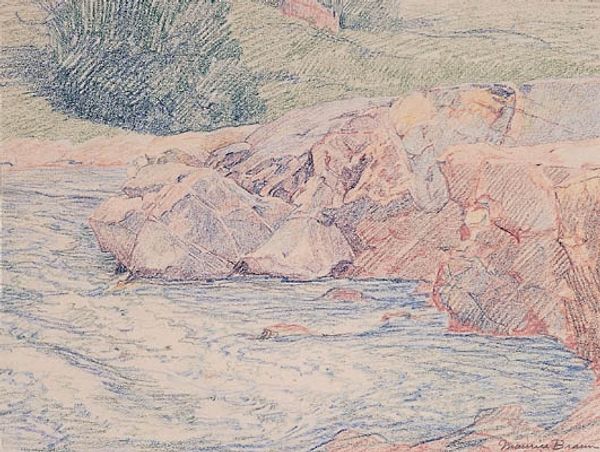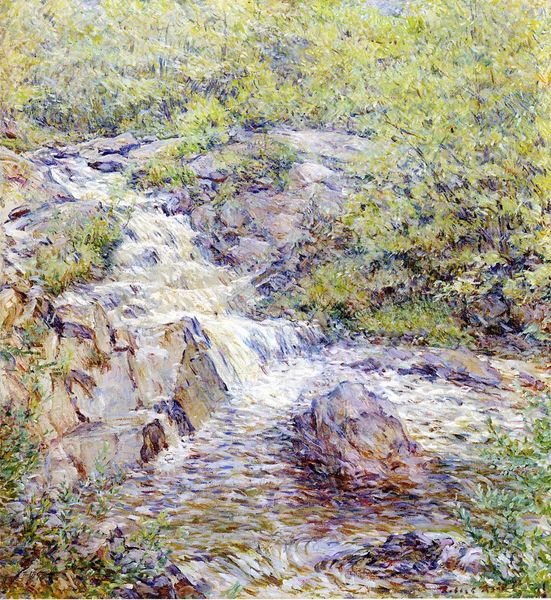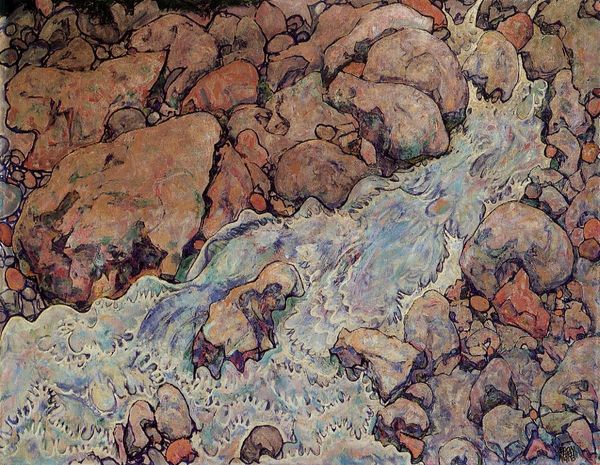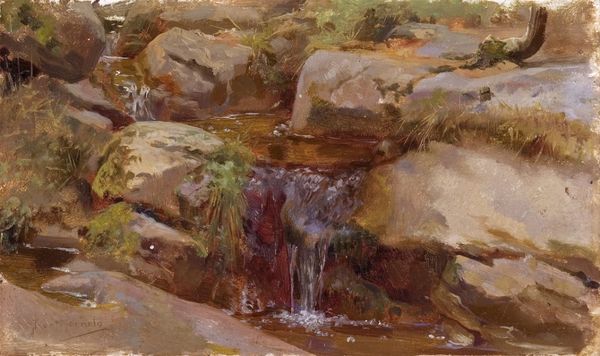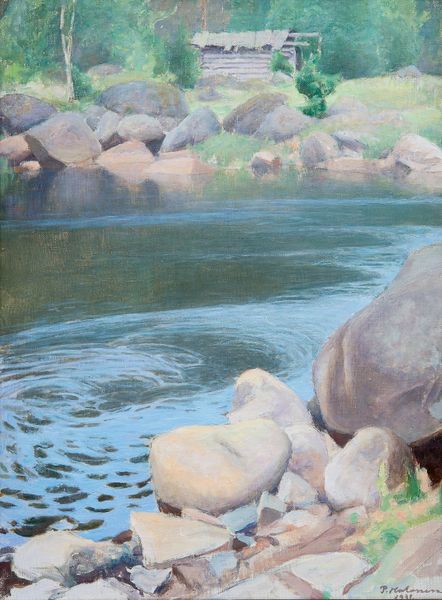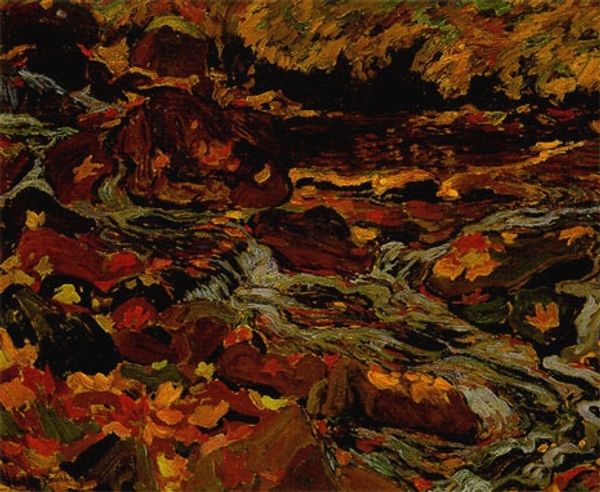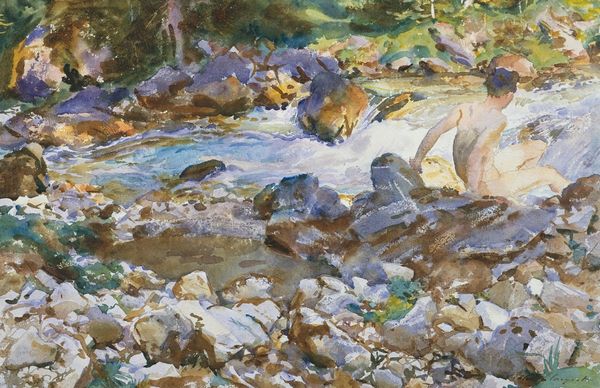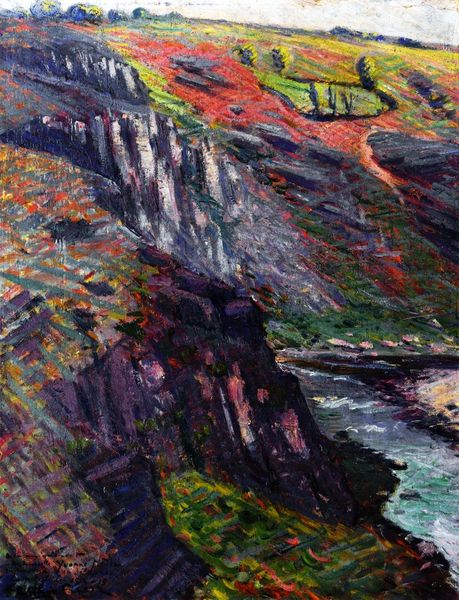
plein-air, oil-paint
#
tree
#
impressionism
#
plein-air
#
oil-paint
#
landscape
#
river
#
rock
#
water
#
nature
Copyright: Public domain
Curator: Claude Monet’s “Torrent of the Petite Creuse at Fresselines,” painted in 1889, captures a vivid scene of rushing water and riverbank foliage in oil. It is a captivating impressionistic exploration of nature's energy. Editor: Immediately, I'm struck by the almost claustrophobic intensity. The close cropping makes me feel right at the water's edge, yet I'm struggling to discern stable ground. The constant movement conveyed is unsettling. Curator: Absolutely. This work, created en plein air, allows us insight into Monet's philosophy. The painting departs from romantic depictions of landscapes. Instead, we are offered a visual essay of natural forces, echoing philosophical discourses on environmentalism. The very act of representing the river’s torrent destabilizes our notions of pictorial serenity. Editor: The symbols are evocative: the relentless water suggests constant change, inevitable flow. But there is something more archaic at play here, the deep thrumming vitality and primal forces within a natural phenomenon such as this one. Curator: Let’s think of how nature itself reflects intersectional narratives of power and resistance. Notice how Monet manipulates color: earthy browns and greens battling against flashes of white water. The rapid, almost violent brushstrokes, create an uneven visual texture which evokes complex associations of violence. He's not just representing what he sees; he is attempting to convey his reaction. Editor: And the rapid brushwork acts as a kind of shorthand for the overwhelming experience of being in that space, bombarded by sensations. There’s a rawness that gets straight to something honest about confronting forces far beyond human control, which resonates across time and cultures. Curator: The social context of landscape paintings is equally significant: the burgeoning art market during this period enabled Monet and others like him to produce for bourgeois consumers. Yet we can resist purely commodified understandings. Consider the inherent challenges in “owning” a work dedicated to rendering nature in its unbound state. Editor: Yes, ultimately, "Torrent of the Petite Creuse" is a strong symbol of constant flux and our attempts to perceive it, or represent it, as something graspable. Curator: An attempt to freeze-frame a moment in an enduring conversation between nature, the individual and their society. Editor: Indeed. It remains an engaging artifact, allowing viewers across generations to reflect on timeless tensions of time, control and freedom.
Comments
No comments
Be the first to comment and join the conversation on the ultimate creative platform.
